Applications
Art Conservation

This is the door of an 18th century longcase clock. The UV image shows the brush strokes of the finish applied to the veneer. It is most likely a natural resin varnish like dammar, which was also used on paintings as a protective layer. One can also see where the boxwood inlay has been damaged. It is the lighter section of the strip inlay on the right side of the UV image.
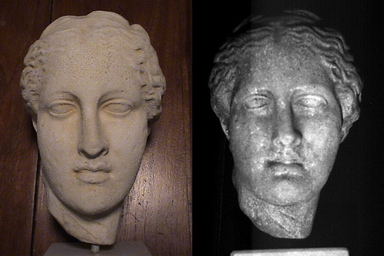
This statue is a reproduction of a marble original from ancient Greece. The UV image shows irregularities in the pigments used to give a patina to the bust.
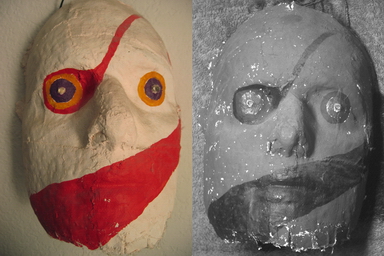
The paint on this plaster mask has chipped off in dozens of small spots from handling and slight flexing of the mask. The plaster underneath is inorganic, and thus tends to be reflective in the UV. The crystals in the plaster reflect UV because of the change in index of refraction. The painted areas are much more absorbing to UV.

This Precolumbian head was repaired carefully by experts after it was accidently dropped. The glue and paintwork that covers the damage contains organic molecules that absorb UV.
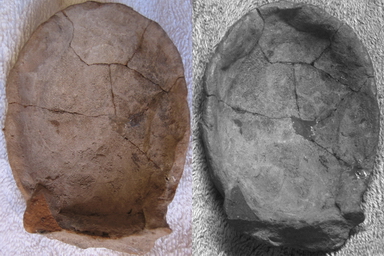
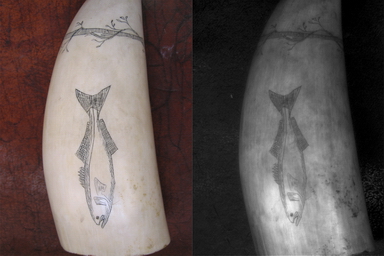
Real sperm whale ivory shows grain and internal texture in the UV band that is not easy to image with visible light. The scrimshaw ink absorbs UV, since it is a carbon and iron-based ink.
Antique rugs often need to be repaired or restored using modern yarns. Though it is possible to achieve excellent color matching in the visible band, one can often detect restorations using near-UV or near-infrared imaging. The images below show an example of this phenomenon on an expertly restored rug. Note the restored area with a rectangular shape to the left of the center of the color photo. The rectangle shows as a uniform shade of grey in the near-infrared image, but a difference in yarn (the diagonal line through the rectangle) is apparent in the near-UV image to the right of the color image. The newer yarn tends to be highly reflective in the near-infrared (because modern pigments do not absorb near-IR light), and in the near-UV band (since oxidation has not yet made the yarn material UV-absorbent).
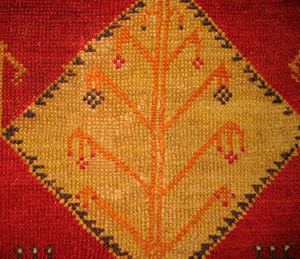 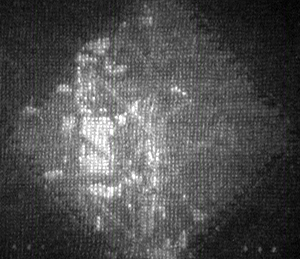
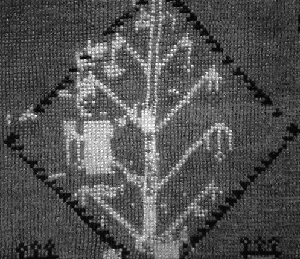
Near-Infrared (780-1100nm)
|


